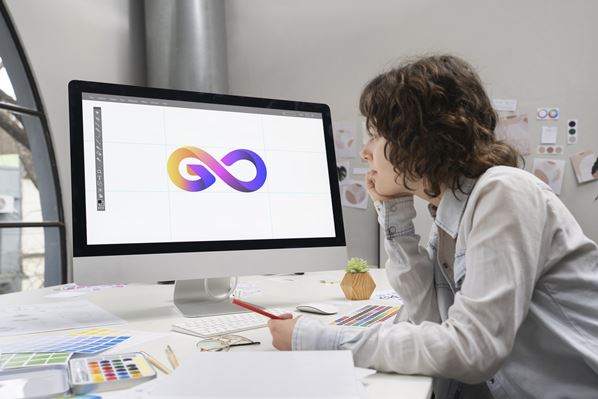
Crafted to embody a brand’s identity in an image, a logo is a powerful symbol that resonates with viewers through a blend of creativity and strategic foresight. This comprehensive article outlines the process of creating a logo design that connects with the target audience effectively.
Understanding Brand Identity
Exploring brand identity is crucial. Before delving into design work, it’s important to let a brand’s mission statement, values, and target audience influence the creative process. It’s key to think about the brand’s purpose and the message it wants to communicate through the logo design to ensure that the logo accurately represents its values. Understanding brand identity can offer an answer to the question of, ‘How to create my own logo?’ by bringing you various options of tools and resources.
Research and Inspiration
Studying the logos already used in the industry can spark creativity and ideas for design inspiration. By examining the designs of competitors, one can uncover trends and standards in the market. While seeking inspiration, it is important to uphold originality. Creating a unique design is essential for setting a brand apart from its competitors and leaving a lasting impact on customers.
Choosing the Right Design Elements
Creating a logo requires a selection of design elements that reflect the brand identity effectively, including shapes, colors, and typography choices that resonate with the brand’s essence and values. Colors have the power to evoke emotions and shape perceptions: vibrant hues can convey energy and vitality, while softer tones can project elegance and refinement. Typography also plays a role in conveying the brand’s personality; modern fonts signal innovation, while classic fonts may imply a sense of heritage and timeless appeal.
Sketching Initial Ideas
When you sketch out your ideas on paper or digitally, it helps you see them clearly and make improvements easily before finalizing them. During this phase, it’s a good idea to try out arrangements and combinations to see what works best together. Making sketches lets you explore possibilities without having to make a permanent decision right away. This method fosters creativity and gives you an idea of what the finished product will look like in the end.
Creating a Digital Draft
After finalizing the hand-drawn designs, the next stage of the process is creating a digital draft. There are software options available for creating digital logos with a variety of useful tools. These programs allow for modifications so that designers can experiment with colors, shapes, and fonts effectively. By working on a version of the idea, designers can enhance it further to create a more refined end product.
Seeking Feedback
Getting input from a variety of viewpoints can provide perspectives that help shape the outcome positively. When sharing your work in progress with coworkers or industry peers for feedback and suggestions on how to enhance it further, this diverse input not only highlights strengths but also identifies areas for growth and evolution in your design process. This feedback enables you to create a final product that resonates effectively with a wider audience base.
Refining and Finalizing the Design
When you take feedback into account while working on the logo design, the process includes adjusting details, such as color balance and font size, to create a polished look that fits well with the design aesthetic before finalizing it for use on different platforms.
Testing Versatility
An effective logo retains its impact regardless of the platform on which it is displayed. The versatility of the design is tested by evaluating its appearance across different backgrounds and sizes. Whether featured on a business card or a large billboard, the logo should remain easily identifiable and impactful. Adjusting the design for both print and digital versions ensures a cohesive representation throughout.
Protecting the Logo
Once you’ve designed a logo for your business or brand, you can legally safeguard it by registering it as a trademark. This protects the rights to its use, preventing competitors from using it without authorization. This legal measure not only protects the identity and reputation of your brand but also provides reassurance for the future.
Summary
Designing a logo represents a journey of creativity, strategy, and refinement. By understanding brand identity, conducting research, and thoughtfully crafting design elements, an impactful logo emerges. This guide provides a roadmap for creating a logo that not only captures a brand’s essence but also resonates with its audience. With careful planning and execution, a logo becomes a powerful symbol of a brand’s identity.




